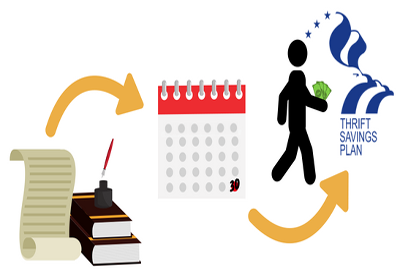
TSP planning mid-September launch for new withdrawal options
The Federal Retirement Thrift Investment Board, the agency that administers the TSP, is also designing new forms that will help walk participants through the co...
Participants in the Thrift Savings Plan can look forward to mid-September for the long-awaited arrival of new withdrawal options.
The Federal Retirement Thrift Investment Board (FRTIB), the agency that administers the TSP, said it’s planning to have the new options ready by Sept. 15, 2019. The deadline gives the FRTIB some cushion ahead of the congressionally-mandated deadline of Nov. 17.
Still, the agency is hopeful the new options will be available next September, said Tanner Nohe, the FRTIB’s withdrawal project manager.
“We’re actually still working hard to get in before September, so there’s more to come with that,” Nohe said Tuesday at the FRTIB’s monthly board meeting.
Feedback from participants had pushed Congress to authorize more flexibilities with the TSP Modernization Act, which lawmakers passed last November. About 62 percent of participants have said they were satisfied with the current options, yet 90 percent said they were satisfied overall with the TSP, according to the agency’s 2017 participant survey.
The FRTIB will begin communicating specific details about the changes coming to TSP’s current withdrawal procedures starting in January. The agency has described what exactly will change with the TSP’s current withdrawal options on several occasions. You can review some of the upcoming changes here.
More TSP process efficiencies
The agency has spent the past year updating nearly 200 pages of existing requirements and plans to issue 86 new notices and four tax notice updates, Nohe said. Regulations detailing the TSP’s proposed withdrawal options will be posted and available for public comment starting in June.
New withdrawal options means the FRTIB will need to make significant changes and upgrades to IT systems. The agency is tackling those in three phases. Once the FRTIB begins testing for one phase, it’ll begin technical and design work for the next, Nohe said.
The FRTIB is also developing three new forms, which participants will use to abandon their accounts and make changes to their installment payments and post-separation, partial and full withdrawals.
Many of these forms will include “wizards,” which the TSP currently uses to help participants more completely fill out certain forms.
Nohe said these “wizards” will be more user-friendly and will walk participants through the process of making changes to the way they withdraw funds from their TSP accounts.
“It’s going to be able to tell what you have in your account,” he said. “So if you have Roth money in your account, it will ask you if you want to take a Roth distribution, a traditional distribution, etc. It’ll be able to understand what you have in your account to be able to suggest what distributions you can see.”
Once participants complete the form, they’ll sign the document, which will include a unique identifier and a summary of all the changes they made, and send it back to the TSP.
“When you send that back in it’ll read that unique identifier, match it up with the data they see and process your form,” Nohe said. “It’ll create some process efficiency for us [and] less errors as well.”
The TSP is planning to deploy more of these form “wizards” more broadly to other aspects of its interaction with participants. Currently, participants can find most forms that they need to make a change to their plans on the unsecure section of the TSP website. Participants will usually print these forms, fill them out and send them to the TSP, which will process them.
But this method often leads to basic processing errors and adds more complexity and time to what should be a simple task, said Tee Ramos, director of participant services for the FRTIB.
The agency has been slowly moving more forms behind its secure website. For the forms that have moved, the agency has seen processing errors go down by more than 20 percent, Ramos said.
“When someone comes in, then they’re going to see the wizard before they see the form,” he said. “Going through that wizard helps them not make common mistakes. It’s not completely automated, but it’s assisted.”
Adding electronic-signature capabilities to TSP forms is also part of the agency’s vision for the future, Ramos said.
Copyright © 2024 Federal News Network. All rights reserved. This website is not intended for users located within the European Economic Area.
Nicole Ogrysko is a reporter for Federal News Network focusing on the federal workforce and federal pay and benefits.
Follow @nogryskoWFED





